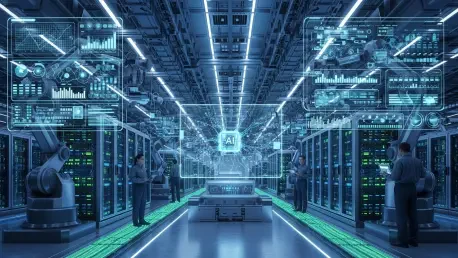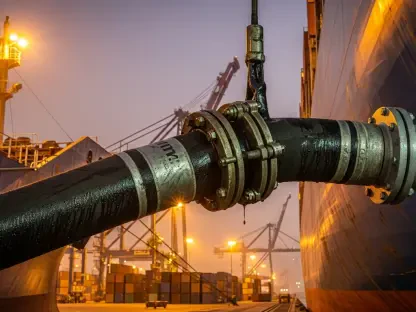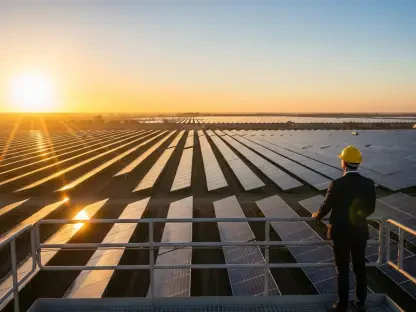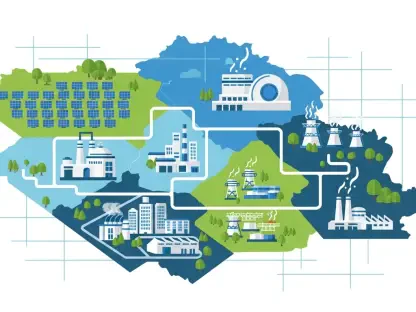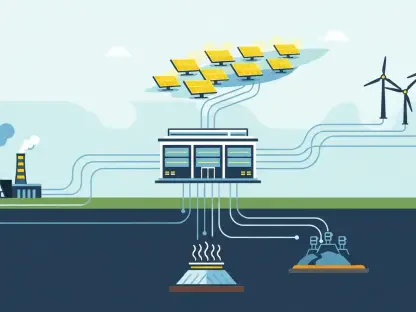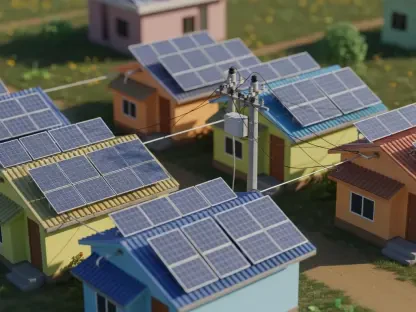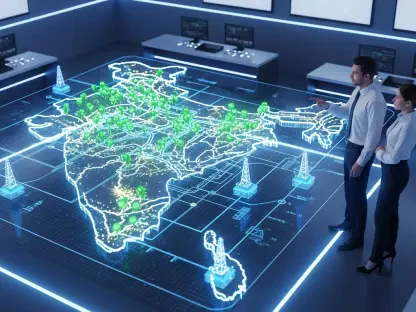Imagine a continent where the relics of an industrial past—coal and gas-fired power plants—stand as silent giants, awaiting a new purpose, and in Europe, this vision is becoming reality as these aging structures are repurposed into high-tech data centers to fuel the insatiable energy demands of artificial intelligence (AI). With the AI boom driving unprecedented needs for power and infrastructure, utility companies and tech giants are joining forces to breathe new life into decommissioned sites. This roundup explores diverse perspectives from industry leaders, analysts, and tech innovators on how this transformation is reshaping energy and technology sectors, offering a glimpse into a unique intersection of sustainability and digital growth.
Powering Progress: Insights on AI and Aging Infrastructure
Utility Giants on Repurposing Potential
Industry leaders from major utility firms emphasize the strategic value of converting old power plants into data hubs. Many point to the inherent advantages of existing grid connections and cooling systems, which drastically cut down the time and cost compared to building new facilities. A common view is that this approach not only addresses the urgent energy needs of AI but also provides a practical way to extend the lifecycle of industrial assets during the shift toward decarbonization.
Another angle from utility perspectives highlights the alignment with Europe’s climate goals. With numerous coal plants slated for closure in the coming years, repurposing offers a transitional solution that keeps infrastructure relevant while supporting renewable energy investments. This dual benefit is often cited as a key motivator for partnerships with technology companies hungry for power.
A contrasting concern among some utility executives is the risk of delaying a full transition to renewables. While the financial incentives are clear, there’s a lingering debate about whether focusing on data center conversions might divert resources from accelerating green energy projects, creating a potential conflict between short-term gains and long-term sustainability.
Tech Sector’s Push for Speed and Efficiency
Voices from the tech industry underscore the urgency of rapid infrastructure deployment to keep pace with AI advancements. Many tech leaders argue that repurposed power plants are a game-changer, bypassing the decade-long delays often faced when establishing new grid connections. This “speed to power” concept is frequently mentioned as a critical factor in maintaining competitive edges in the fast-evolving digital landscape.
Differing opinions emerge on the scalability of this model. Some tech innovators express optimism about the potential to replicate these conversions globally, viewing Europe as a testing ground for a broader strategy. Others caution that the varying conditions of aging plants across regions could limit widespread adoption, pointing to the need for tailored solutions rather than a one-size-fits-all approach.
A further insight from tech circles focuses on the environmental commitments tied to these projects. There’s a strong push for low-carbon energy sources in power supply agreements, reflecting a shared goal with utilities to balance AI’s energy hunger with climate responsibilities. This alignment, while promising, raises questions about the feasibility of meeting such standards consistently across diverse locations.
Economic and Environmental Impacts: A Balanced View
Financial Opportunities for Utilities
Analysts and financial experts weigh in on the economic windfall for utilities entering long-term contracts with tech giants. Premium rates for low-carbon energy, often significantly higher than standard market prices, are highlighted as a major draw, providing stable revenue streams to fund renewable expansions. This financial lifeline is seen as a transformative opportunity for companies navigating the complexities of energy transition.
On the flip side, some market observers note the risks of over-reliance on tech partnerships. The competitive pressure to secure these deals could lead to uneven profitability, especially for smaller utilities lacking the scale to negotiate favorable terms. This disparity suggests a potential divide in how benefits are distributed across the sector.
An additional perspective focuses on the broader economic ripple effects. Repurposing plants is viewed as a way to preserve jobs and stimulate local economies that might otherwise suffer from plant closures. While not a universal solution, this aspect garners support from regional stakeholders who see data centers as a modern anchor for industrial communities.
Sustainability Challenges and Innovations
Environmental analysts offer a nuanced take on the green implications of this trend. Many applaud the integration of renewable energy into data center projects, viewing it as a step toward aligning AI growth with Europe’s decarbonization targets. The concept of “energy parks,” pairing data hubs with new renewable installations, is often cited as an innovative model worth exploring further.
However, skepticism exists about the long-term environmental impact. Some experts argue that repurposing may prolong the use of sites tied to fossil fuel legacies, potentially undermining more aggressive climate action. This tension between immediate utility and overarching green goals remains a point of contention in sustainability discussions.
A third viewpoint emphasizes the need for rigorous oversight to ensure that environmental promises are met. With many projects still in early stages, analysts stress the importance of transparent metrics to evaluate whether these conversions genuinely contribute to a lower carbon footprint, rather than serving as a temporary workaround for energy demands.
Regional Variations and Global Implications
Diverse Approaches Across Europe
Industry watchers highlight significant regional differences in how this transformation unfolds. In countries like Germany, large-scale projects with substantial power capacities are taking shape, driven by robust industrial histories and grid infrastructure. This contrasts with nations like Britain, where multiple smaller conversions are prioritized, reflecting varied energy landscapes and policy frameworks.
Another observation centers on the regulatory challenges that differ by region. Some areas face stricter zoning and environmental rules, which could slow down conversions compared to more lenient jurisdictions. This patchwork of policies is seen as a hurdle that might affect the pace and uniformity of adopting this model across the continent.
A global lens is also applied by some commentators, who speculate on how Europe’s experience could inform similar efforts worldwide. While the unique combination of aging plants and AI demand positions Europe as a pioneer, the lessons learned—both successes and setbacks—are expected to shape strategies in other regions grappling with digital and energy transitions.
Future Models and Collaborative Strategies
Forward-thinking insights come from consultants advocating for deeper utility-tech collaborations. Many suggest that joint ventures, rather than mere contracts, could foster innovation in how energy and data needs are met, potentially setting new industry standards. This collaborative spirit is viewed as essential for tackling the complexities of such an unprecedented shift.
A differing opinion focuses on the role of government in facilitating these transformations. Some policy experts argue for incentives and streamlined permitting processes to accelerate repurposing, ensuring that the momentum isn’t lost to bureaucratic delays. This call for public-private synergy adds another layer to the discussion on sustainable progress.
Lastly, there’s a shared recognition of the experimental nature of current projects. Industry voices collectively agree that while the initial results are promising, continuous adaptation and learning will be crucial. This openness to evolution is seen as a strength, allowing the model to refine itself in response to emerging challenges and opportunities.
Reflecting on a Transformative Shift
Looking back, the discussions around repurposing Europe’s old power plants into AI-driven data centers revealed a fascinating convergence of technology and energy sectors. Diverse perspectives from utilities, tech leaders, and analysts painted a picture of opportunity tempered by caution, with economic gains and sustainability goals often in delicate balance. For those intrigued by this evolving landscape, the next steps involve monitoring regional policies on plant closures and exploring investment prospects in energy-tech partnerships. Further reading on innovative energy park models and global case studies is recommended to deepen understanding of how this trend could redefine industrial adaptation worldwide.
